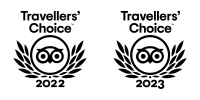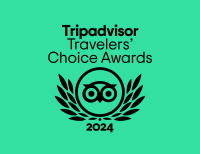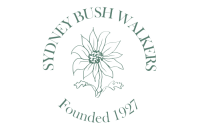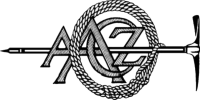- Home
- Nepal
- Adventure Activities
- Peak Climbing
- Mountain Expedition
- Local Tours
- Sirubari Village Homestay
- Ghale Gaun
- Kalinchowk Tour
- Halesi Mahadev - Maratika Cave package
- Chitwan Jungle Safari
- Day tour in Kirtipur
- Day tour in Kathmandu City
- Spiritual Tour to Muktinath
- Chitlang and Kulekhani
- Bardiya National Park
- Jeep Tour to Rara Lake
- Gosaikunda Lake
- Manakamana day Tour with cable-car ride
- 4WD Jeep Tour to Upper Mustang
- Family Holidays
- Heli & Mountain Flights
- Trekking Routes
- Kailash Mansarovar
- Bhutan
- Tibet
- Multi Country
- Domestic Flights
- Contact
- Home
- Nepal
- Adventure Activities
- Peak Climbing
- Mountain Expedition
- Local Tours
- Sirubari Village Homestay
- Ghale Gaun
- Kalinchowk Tour
- Halesi Mahadev - Maratika Cave package
- Chitwan Jungle Safari
- Day tour in Kirtipur
- Day tour in Kathmandu City
- Spiritual Tour to Muktinath
- Chitlang and Kulekhani
- Bardiya National Park
- Jeep Tour to Rara Lake
- Gosaikunda Lake
- Manakamana day Tour with cable-car ride
- 4WD Jeep Tour to Upper Mustang
- Family Holidays
- Heli & Mountain Flights
- Trekking Routes
- Kailash Mansarovar
- Bhutan
- Tibet
- Multi Country
- Domestic Flights
- Contact
Trek to Tibet Kharta Valley
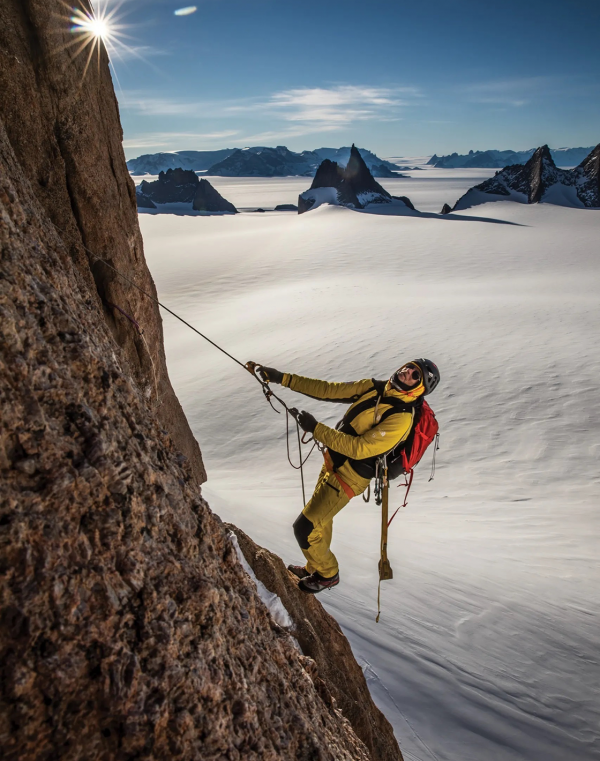
An exciting Trekking experience
Tibet Kharta valley trekking is popular trekking destination in Tibet. Kharta valley trekking leads you to the rarely visited eastern face of Mount Everest. Tibet Kharta valley trek include Tibet Khangsung valley trekking too. A visit to the famous North base camp of Everest is another highlight of this trip. Kharta valley trek requires some stamina but it is amazing what it is worth. The valleys and ridges below the snowline are richly covered with grasses and thick vegetation nurtured by the monsoon rains that manage to sneak behind this mountains. The valley of Khangsung is a place to allure the trekkers with its grassland and an enchanting bosom of flowers. The Khangsung Valley trek is lead through the Langma La Pass at an altitude of 5320m—the highest pass on the way. Kharta valley trekking trail passes through alpine meadows, forests filled with wildflowers, glaciated valleys, high mountain passes, traditional Tibetan villages, ancient monasteries, rich barley fields, picturesque yak pastures, Tibetan nomadic land, emerald green lakes and so many other captivating sights, beautiful Himalayan scenery Mt. Makalu, Mt. Everest, Mt. Lhotse Mt. Shishapangma, Mt.Cho Oyu, Mt. Kanchenjunga Pethangtse, Menlungtse, Gauri Shankar etc.
1 - 10
Detailed Itinerary
- Day 01: Arrive Kathmandu
Arrive at Kathmandu after a scenic flight over the mountains. We will pick up you and transfer to Hotel. - Day 02: Explore the city and prepare for the flight to Tibet tomorrow
You can spend this day exploring some of the World Heritage sites in Kathmandu valley for some time and prepare for the trip to Tibet that starts tomorrow. - Day 03: Fly to Lhasa and transfer to downtown Lhasa ( 3650m/45km)
You will be warmly welcomed by our Tibetan travel guide and driver and accompany to the holy city of Lhasa through the Yarlung Tsangpo river, known as Bharmaputra river and Kyichu river. Both of these two rivers flow through the eastern part of Tibet and finally it empties into the Bay of Bengal in India. - Day 04-05: sightseeing in Lhasa, Potala Palace, Jokang temple and Bharkor, Drepung & Sera monasteries. Same hotel
Visit Potala Palace and Jokang temple which is the most sacred and oldest temple of Tibet, built in the 7th century by the 33rd great Dharma king called Songtsen Gampo and today it is shrined to the most sacred image of Budha Shakyamuni, brought to Tibet from Nepal. Visit two largest monasteries of Drepung and Sera in the central Tibet and see the most interesting monk’s philosophical debate. - Day 06: Drive to Gyantse, 3950mts,260Km. Hotel in Gyantse
You will start your tour at around 9Am from your hotel and then drive towards Gyangtse through 3 big mountain passes, Kampa La, Karo La, Simila respectively. Karola is the highest pass among them which is over 5000Mts with it's most beautiful glaciers, beautiful Yamdrok lake emerged as coral color from the top of Kampala pass. You will have your lunch at Nakartse country which is just between the Yamdrok lake and Karola glaciers. Visit Palchoe monastery and Kubum Pagoda stupa. - Day 07: Drive-Gyantse-Shigatse-Sakya, 4050mts/290Km. Mansarovar Hotel
You will continue Tibet journey to Shigatse by passing one of the biggest farming land in Tibet where people grow barley, wheat, different kinds of vegetables. Visit Tashi Lhunpo monastery which is the seat of the Penchen Lama.continue your journey to Sakya monastery and visit the monastery. - Day 08: Drive Sakya-Kartha-Yulok,3690mts,260Km Camp
After breakfast, you will start your tour and cross the passes, Drila pass over 5000mts and Pangla,5000mts. From Tashizom village, you will turn left from the main road drive toward Kartha Chu village. - Day 09: Trek Yulok-Dhampu,4260mts,4 hrs camp
Today you will start your trek and walk sloppy way up and the landscape from today is turning into more green. - Day 10: Trek Dhampu-Shaotso-Methok Sechen,4750mts,5 hrs Camp
After breakfast, start your trek and enjoy the beauty of the landscape of snow capped mountain, green grassland. We will have long distant view of Mt Makalu, 8475mts. Trek across the Shaola pass 4890mts and along the Shaotso which is a small beautiful lake. - Day 11: Trek Methok Sechen-Zoksham-Tsonak-Thangsum,4400mts/6 hrs Camp
After breakfast, you will start your trek through the dense forest and beautiful meadows where you can see a group of nomads with their typical Tibetan nomadic tents as well as the most famous densely forested Karma valley. From your campsite, you will have a marvelous view of Makalu Everest Lhotse respectively. - Day 12: Trek Thangsum-Pethang,4310mts,3 hrs camp
After breakfast, we will enjoy the most beautiful campsite where we can have the closest fantastic view of Mt Makalu, Lhotse and Everest respectively. After taking photos and enjoying the scenery, we will continuously trek down to Pethang Ringmo. - Day 13: Trek pethang-Pethang Ringmo,4870mts,3 hrs Camp
After breakfast, we will trek close to the giant of Mt Makalu, Lhotse, and Everest and finally get to the east Basecamp of Mt Everest with full of Glaciers. - Day 14: Explore the east Everest Base Camp.
Trek above the Pethang Ringmo and enjoy the full day of exploring the east Everest Base camp and it’s biggest glaciers. Return to the same camp site - Day 15: Trek Pethang Ringmo-Tso Shurima,4900mts,5 hrs camp
Today you will be viewing Khartapuri mountain-6600Mt with beautiful glaciers as well as Everest and Lhotse again. It is a valuable day for you to leisure your afternoon day nearby the lake Shurima - Day 16: Trek Tso Shurima-Langmala,5250mts-Shomaling,4170mts,5-6 hrs then route to Rongbuk monastery,110Km drive Camp
After breakfast, start your trek as usual and cross the highest pass, Langma la 5250mts. From the top of the Langma la pass, you can view your last scenery of Lhotse and Everest. After the pass, you will see a small lake called Da-nyen, meaning Tibetan Bonjo in Tibetan named according to the located shape of the lake. Today's scenery is the villages of Kharta valley and their fields where they can grow barley only. After Yulok, we will be driving all the way to Rongbuk monastery. There are 110Km distance from Yulok to Rongbuk monastery, the highest monastery in the world. - Day 17: Explore Everest Base Camp and then transfer to Sakya monastery ,4050Mts/ 240Km. hotel on BB
Explore Everest Base Camp by taking a conservative bus to the Everest base camp or by walk. If you walk to Everet base camp, it will take you to two hrs to get there. On the way you can visit a miraculous cave of Padmasamvawa . After two hrs trek, you get to the Everest base camp. It is the best point of enjoying the world's highest mountain and taking photos of it. You can have a basic lunch at Everest Base camp since there are many local tented tea houses where they sell instant noodles or bread etc. Late afternoon, drive back to Sakya monastery. Have evening visit to the monastery and monks debating. - Day 18: Drive from Sakya to Shigatse by van (3900m/150km)-Shigatse-Lhasa by train (3650Mts/ 430KM ) Hotel on B.B
Morning visit Sakya monastery which dates back to the 12th century and the Buddhism library in Sakya is huge and amazing. Drive back to Shigatse at the distance of 150km and from Shigatse to Lhasa, you will take train along the Bharmaputra river with a landscape of sandy hills, villages, and Rulak Yungdrung ling at the otherside of the river. You will have lunch in a small town called Nyenmo which is the border point between Shigatse and Lhasa. - Day 19: Drive to Lhasa Gongkar airport.(3600Mts/ 60Km ) End the trip
Today you will drive towards Lhasa Gongkar Airport to your onward journey.
This trip can be redesigned or redeveloped as per your taste, For more information please e-mail us at This email address is being protected from spambots. You need JavaScript enabled to view it.
Cost and dates
We do small group trek or private trip as your request.
For quick information / contact us at whatsapp/viber + 977 9841815039
Or Drop us inquiry at This email address is being protected from spambots. You need JavaScript enabled to view it.
Tips & Resources
What's Included
- Accommodation as mentioned in the program on twin sharing basis
- All flights tickets as [per itinerary
- All ground transportation
- All necessary Tibet entry and road permits
- 1 Local Tibetan English speaking guide
- BB inside the hotel and full board during the camp
- All camping equipments
- All camping fees
- Cook and asistant with all utensils
- Oxygen in the vehicle and during the trek incase needed.
What's Excluded
- Airport Taxes & excess baggage charge.
- All expenses of personal nature such as beverages, telephone bill, laundry bill, mineral water, tips and etc.
- Personal medical and travel insurance.
- Rescue & evacuation
- Nepal re-entry visa fee
Equipment List
For Head:
- Sun hat or scarf
- Light balaclava or warm fleece hat
- Sunglasses with UV protection
Far upper Body:
- T-shirts
- Expedition thermal tops
- Fleece jacket
- Wind-Stopper jacket
- Down vest and jacket
For Hands:
- Lightweight warm gloves plus thick gloves
Lower Body:
- Hiking shorts
- Lightweight cotton long pants
- Light and expedition weight thermal bottoms
- Fleece or wool pants
- Waterproof (preferably breathable fabric) shell pants
For Feets:
- Lightweight inner socks
- Thick, warm wool hiking socks
- Hiking boots with spare laces
- Camp shoes
Accessories:
- Sleeping bag rated to below zero degrees
- Headlamp
- Small pad or combination lock-to-lock trek bag
- Large plastic bags - for keeping items dry inside trek bag
- Day-pack (approximately 2500 to 3000 cubic inches)
- Water bottles
- Toiletries
- Small wash towel
- Walking sticks
Useful Info
The Trip costs will Vary Depending on the Group Size, duration of days and Services required please contact us via our website with your Details to obtain a Quote.
Frequently Asked Questions
The best time to visit Tibet is from April to end of october.
Currency in Tibet is Renminbi (RMB). Foreign currencies cannot be used directly. Foreign currencies may be converted into RMB at all banks, bank branches or hotels at the exchange rate quoted on the foreign exchange marker on the day.
Most of the internationally accepted credit cards are usable in Lhasa. They include: Visa, MasterCard, American Express, Diner's club, and the JCB card of Japan. Credit cards are accepted only in large shopping stores. Credit card symbols are displayed in the visible place in shops and hotels indicating credit cards are accepted.
We accept major two ways of payment:
- Wire transfer [we will send you our company bank account info via email];
- Credit card [we will send you a credit card authorization letter via email]
You need to have at least six months valid passport, a valid China visa (if you are coming from mainland china) Tibet group visa (if you are coming from Katmandu we will do in Kathmandu) and a Tibet travel permit.
If you are travelling to Tibet from mainland china then you need a valid Chinese visa which you can obtain at Chinese embassy in your home town
No, because Tibet is a part of China, if enter Tibet from other cities in China mainland and after the trip in Tibet, get back to China mainland again, only a single entry visa is required.
Before you are coming to Lhasa from Katmandu, you must get Tibet group visa from Katmandu because no matter you've already got the visa in your country or not, you must get a visa in Katmandu.
- Step 1: After you book the tour with us, provide us your copy of passport.
- Step 2: We will apply the 'Visa Invitation Letter' from Tibet Tourism Bureau with your copy of passport and send it Kathmandu.
- Step 3: After your arrival in Katmandu, we will ask your original passport, and then we go to the Chinese Embassy to apply the Tibet group visa. With the 'Visa Invitation Letter', you can get your Tibet group visa easily. Normally, it will take 3 working days.
You can get the Tibet Travel Permit easily through a travel agency except diplomats, journalists, and government officials who should travel to Tibet under the arrangement by the Foreign Affairs Office of Tibet Government.
Yes, we do have Group Tour or joining Tour. Let us know your interest and time then we will provide you options to join the trips.
- More than 30 days before trip start date – 10% of land cost
- 15-30 days before trip start date – 20% of land cost
- 7-14 days before trip start date – 30% of land cost
- 4-6 days before trip start date – 50% of land cost
- Less than 4 days before trip start date – 100% of land cost
Hotels in small cities and the Everest Base Camp are very simple.
Tibet large and deluxe hotels usually provide wireless access to internet for guest rooms. But there are still some hotel rooms, not all, in Lhasa and rest Tibetan cities don’t have access to internet, so you should inquiry your guide for internet access hotels.
24 - Hour hot water supply depends on different hotels and hostels where you can check first, do some preparation or choose an available one in major cities like Lhasa, Shigatse and Gyantse. But it’s hard to find perfect one in remote and harsh places.
Tibet owns its distinctive Tibetan food, like Tsampa,Tibetan Noodle, Momo, Milk Curd, Yogurt and local dishes. With the development of tourism, there are more cuisines brought into Tibet, e.g. Sichuan Cuisine, western food, Nepali food, Indian food and many other Chinese cuisines. In Lhasa, tourists have a wide range of choice while limited options in remote towns and areas.
If your arranged tour is mainly in downtown Lhasa, you can easily get to Potala Palace, Jokhang Temple, Barkhor Street or nearby attractions at short distance by walking or taking a local rickshaw. If you want to tour around Lhasa, we suggest you to use minivan as the road condition around Lhasa is pretty good, and the minivan cost less as well.
Here are the lists of medicine:
- Diamox (most common medicine for the high altitude sickness).
- Aspirin
- flu tablets
- throat lozenges
- nasal decongestants.
Get adequate rest and drink lots of water, Administrating oxygen can help if the symptoms are worsening. The real treatment for acute high altitude sickness is descending down to lower altitude as soon as possible. If the patient doesn’t show any improvement in 3 to 4 hours. patient should go to hospital for proper treatment. High altitude sickness can be deadly if it is not treated accordingly.
Following are categories of people who should avoid visiting Places of higher altitude;
- Women with an advance pregnancy
- Children under three years of age
- Traveler with severe fever, cold
- Patient with Acute pulmonary diseases
- Travelers with acute cardiovascular diseases
Visit us
-
JP Marga, Thamel, Kathmandu, Nepal
-
+977-01-5365371
-
+977 98418-15039
(Whats App, Viber & Telegram)
